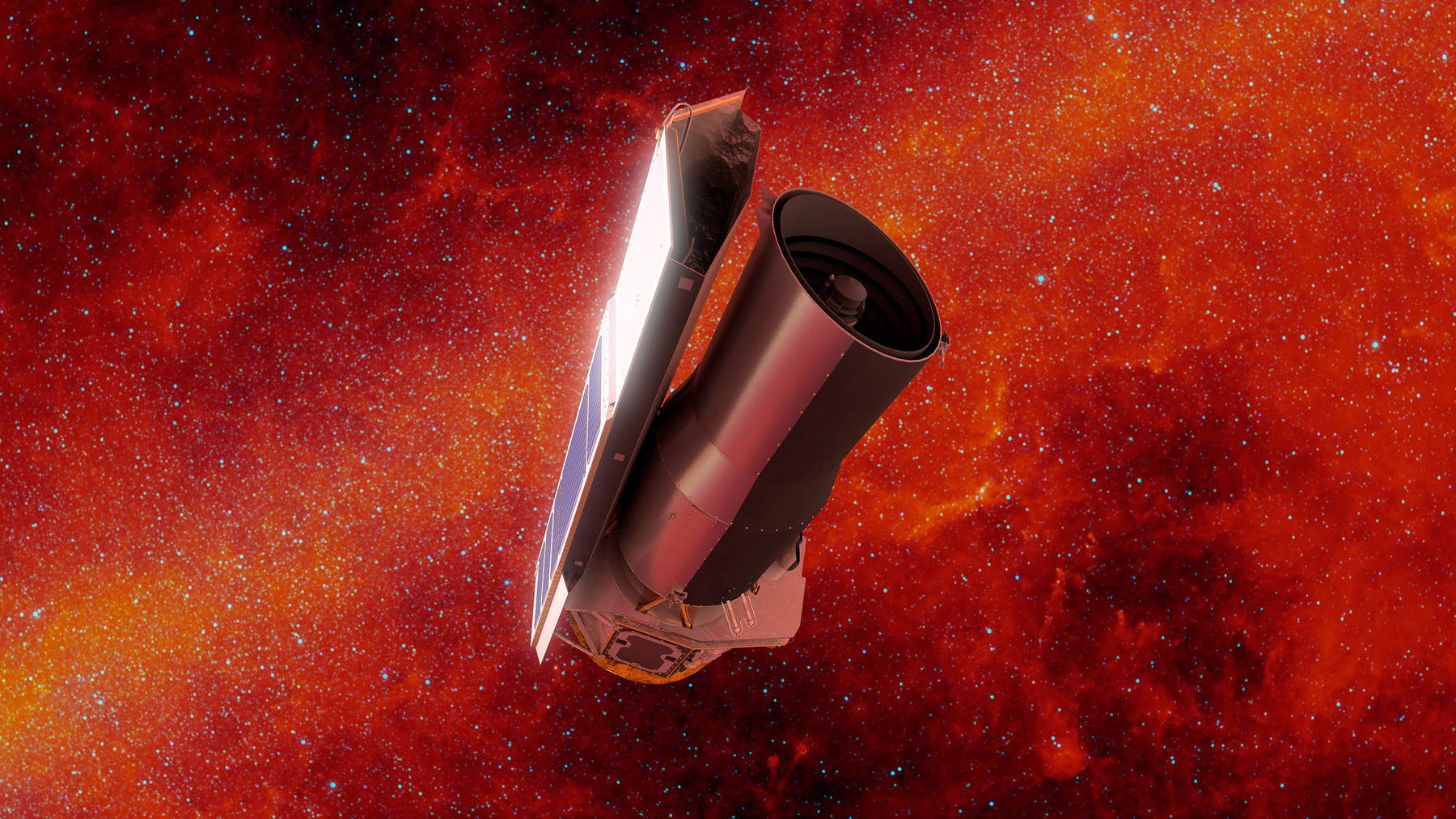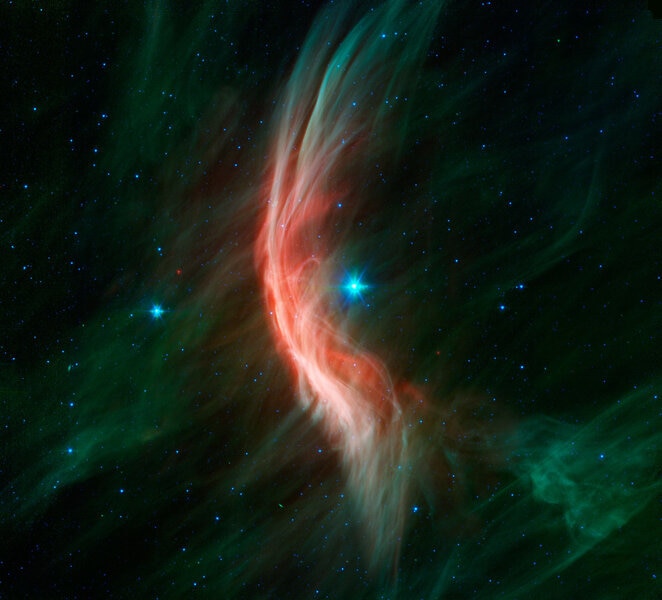Create a free profile to get unlimited access to exclusive videos, sweepstakes, and more!
Good night, Spitzer Space Telescope

Yesterday, after 6002 days since launch, NASA engineers switched off the Spitzer Space Telescope.
I knew this day was coming. I mean, of course it was: Everything is finite, and spacecraft doubly so. They have moving parts, or limited fuel, or, in this case, budgetary constraints to their operation. They may operate for years, or decades, but the day will come.
Launched in 2003, Spitzer was designed to look at the Universe in the infrared, where things look mighty different than with our eyes. Cold dust that is dark, even opaque, in visible light glows eerily and ethereally in the infrared. Brown dwarfs, objects more massive than planets but less so than stars, give off their peak glow there, making them easy pickings for Spitzer. Distant galaxies, so far away that the Universe has aged billions of years since their light left them, and the cosmic expansion has stretched their light out into longer wavelengths, reveal their secrets in the infrared. Exoplanets light years from Earth, warmed by their host stars, stand out to Spitzer like a lit match in a dark room.
It used liquid helium to cool its detectors, because the telescope itself glows in the infrared — its own warmth betraying its ability to see clearly. But in 2009 that helium ran out, limiting what Spitzer could do. Despite that, engineers kept it running, because some of its capabilities were still strong enough to carry on.
And so it did, until January 30, 2020. A review in 2016 called for it to be turned off in 2018, but delays in the James Webb Space Telescope stayed their hand; they kept Spitzer going to try to avoid a gap in NASA's space-based infrared astronomy. Delays in JWST, however, made this an ever-more difficult task.
So, yesterday, the command was given, and the amazing and wonderful observatory was decommissioned.
I've been following Spitzer since before it launched. Although I never used it myself for research, writing about its results have been a joy. Which brings me to a dilemma.
As I thought over what I would say on this day, my first instinct was to honor the observatory by creating a gallery of my favorite Spitzer images, explaining their science. But then I went to the public Spitzer image gallery at Caltech, and was quickly dissuaded of this idea. Faced with dozens and dozens (and dozens and dozens) of images, I got vapor lock. How could I pick my top (say) ten?
So I got an idea: Pick my favorite one. Just one. That's it.
And suddenly the decision was easy. And it's not a galaxy, or some sprawling star factory. Please allow me to show you… a star. Specifically, the star Zeta Ophiuchi.
I don't think I have to defend my choice very rigorously. It's gorgeous beyond gorgeous.
Zeta Ophiuchi is one of the brightest stars in the constellation Ophiuchus, easily seen by naked eye for someone with normal vision when the constellation is high in the northern hemisphere sprint and summer months. It's not terribly bright star by eye, just one of many in that area, but that visual mundanity belies its true nature: It's a monster.
It's what we call an O-type star, one of the most massive stars the Universe is capable of making today. It has something like 20 times the mass of the Sun, is nearly 10 times the diameter, and blasts out light at a fierce 90,000 times the Sun's luminosity. Replace our Sun with it, and life on Earth would last maybe an hour. Thankfully, it's 560 light years away!
But there's more. Zeta Oph is a runaway star, meaning it's plowing through space at high speed, faster than most other stars around it. It may have once had a binary companion, another star in mutual orbit. That star exploded, and the suddenly lowering of mass flung Zeta Oph into the galaxy like a rock from a trebuchet.
Besides its luminosity, in visible light there's not much to make it distinguishable from any other star. But to Spitzer's eye, looking in the infrared, a secret is revealed. It's moving through a region of the Milky Way littered with dust, grains of rock and carbonaceous material strewn between the stars. Zeta Oph, powerhouse that it is, radiates away a powerful wind of subatomic particles, like the solar wind but far more intense. That, coupled with its motion, creates a huge shock wave in the dust it's moving through. A lovely and gossamer-looking sheet of dust is pushed into an arc by this pressure, half a light year ahead of the star itself, like a piece of hot metal worked by a blacksmith.
Every time I see this image I sigh lovingly. It's just so beautiful; the shape, the feathering, the colors created by converting different wavelengths of infrared light into visible so we can appreciate them. And beneath that, powering the beauty, is the scientific knowledge, the understanding of why this is, brought to us by Spitzer Space Telescope.
And, of course, the many men and women who worked on it. Science is not done in a vacuum — well, literally, in this case it is, but metaphorically science is done by humans. People. Teams of scientists, engineers, civil servants, contractors, lab techs, machinists, all dedicated to creating a machine of uncompromising precision and sight… and that doesn't even include the people who worked on the Delta II rocket that lofted it into deep space.
Nature created the immense and distant objects we see, but it was people who gave us the ability to appreciate them.
So good night, Spitzer. And my sincere, deepest thanks to everyone involved on the mission. 16 years is a very, very good run. You did good.




























